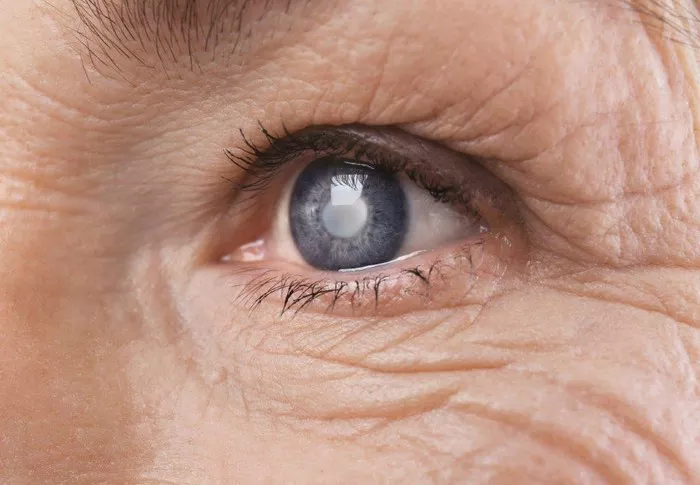Crow’s feet, also known as laugh lines or character lines, are a common skin concern that appears around the outer corners of the eyes. These fine lines and wrinkles are a natural part of the aging process and are primarily caused by repeated facial expressions, sun exposure, and a decrease in collagen and elastin production. Understanding what crow’s feet look like, their causes, and available treatment options can help individuals manage and address this common sign of aging. In this article, we will delve into the appearance of crow’s feet, their development, and strategies to minimize their appearance.
The Appearance of Crow’s Feet
Crow’s feet are characterized by the presence of small, fine lines and wrinkles that radiate outward from the outer corners of the eyes, resembling the feet of a crow when the eyes are squinted or smiled. These lines may extend horizontally or diagonally across the skin and can vary in depth and prominence depending on the individual and their lifestyle habits.
Common characteristics of crow’s feet include:
Fine Lines: Crow’s feet typically start as thin, fine lines that gradually become more noticeable over time.
Radiating Pattern: The lines fan out from the outer corners of the eyes in a distinct radiating pattern.
Dynamic Wrinkles: Initially, crow’s feet may only be visible during facial expressions such as smiling or squinting. However, as they deepen, they may become more evident even at rest.
Wrinkling with Age: Crow’s feet are more commonly observed in individuals over the age of 30 and tend to become more pronounced with advancing age.
Causes of Crow’s Feet
Several factors contribute to the development of crow’s feet, including:
Facial Expressions: Repeated facial movements, such as smiling, squinting, and laughing, can lead to the formation of dynamic wrinkles over time.
Sun Exposure: Prolonged exposure to ultraviolet (UV) rays from the sun can accelerate the breakdown of collagen and elastin in the skin, leading to premature aging and the appearance of wrinkles.
Loss of Skin Elasticity: As we age, our skin produces less collagen and elastin, which are essential proteins responsible for maintaining skin firmness and elasticity.
Smoking: Smoking can contribute to the breakdown of collagen in the skin, hastening the development of wrinkles, including crow’s feet.
Minimizing the Appearance of Crow’s Feet
While crow’s feet are a natural part of the aging process, certain measures can help minimize their appearance:
Sun Protection: Regularly apply a broad-spectrum sunscreen with at least SPF 30 to protect the delicate skin around the eyes from UV damage.
Wear Sunglasses: Donning sunglasses that provide adequate UV protection can shield the eyes from harmful sun exposure and minimize squinting.
Moisturize: Regularly moisturize the skin to keep it hydrated and supple, helping to reduce the visibility of fine lines.
Avoid Smoking: Quitting smoking can promote better skin health and slow down the development of wrinkles.
Use Eye Creams: Incorporate eye creams containing retinoids, peptides, or antioxidants into your skincare routine to target crow’s feet and improve skin texture.
Facial Massage: Gentle facial massages can enhance circulation and promote skin elasticity.
Professional Treatments for Crow’s Feet
For individuals seeking more significant improvements, several professional treatments can effectively address crow’s feet:
Botox: Botulinum toxin injections, such as Botox, can relax the muscles responsible for crow’s feet, reducing their appearance temporarily.
Dermal Fillers: Injecting dermal fillers can add volume to the skin, smoothing out crow’s feet and restoring a more youthful look.
Laser Resurfacing: Laser treatments can stimulate collagen production and improve skin texture, reducing the visibility of crow’s feet.
Chemical Peels: Chemical peels can exfoliate the skin, diminishing fine lines and promoting a smoother appearance.
Conclusion
Crow’s feet are a natural part of the aging process and are characterized by small, fine lines that radiate from the outer corners of the eyes. They develop due to repeated facial expressions, sun exposure, and a decrease in collagen and elastin production. While it is impossible to completely prevent crow’s feet, adopting a comprehensive skincare routine and protecting the skin from sun damage can help minimize their appearance.
For those seeking more significant improvements, professional treatments such as Botox, dermal fillers, laser resurfacing, and chemical peels can offer effective solutions. Embracing a holistic approach that includes proper skincare, lifestyle modifications, and expert guidance from dermatologists or skincare professionals can help individuals manage and address crow’s feet, promoting a smoother, more youthful-looking appearance for years to come.


